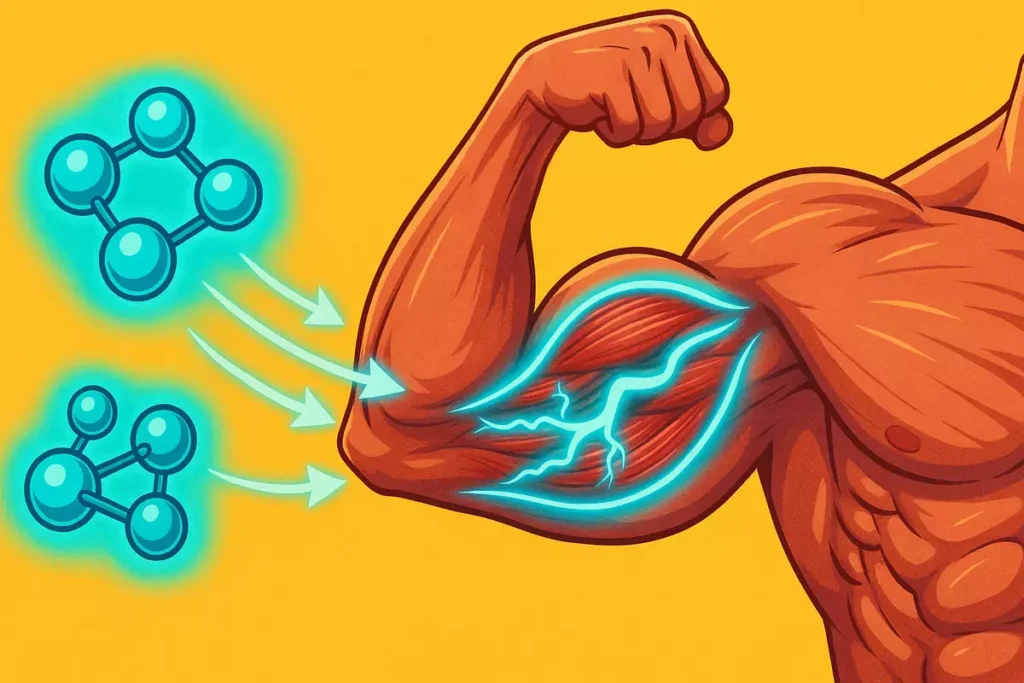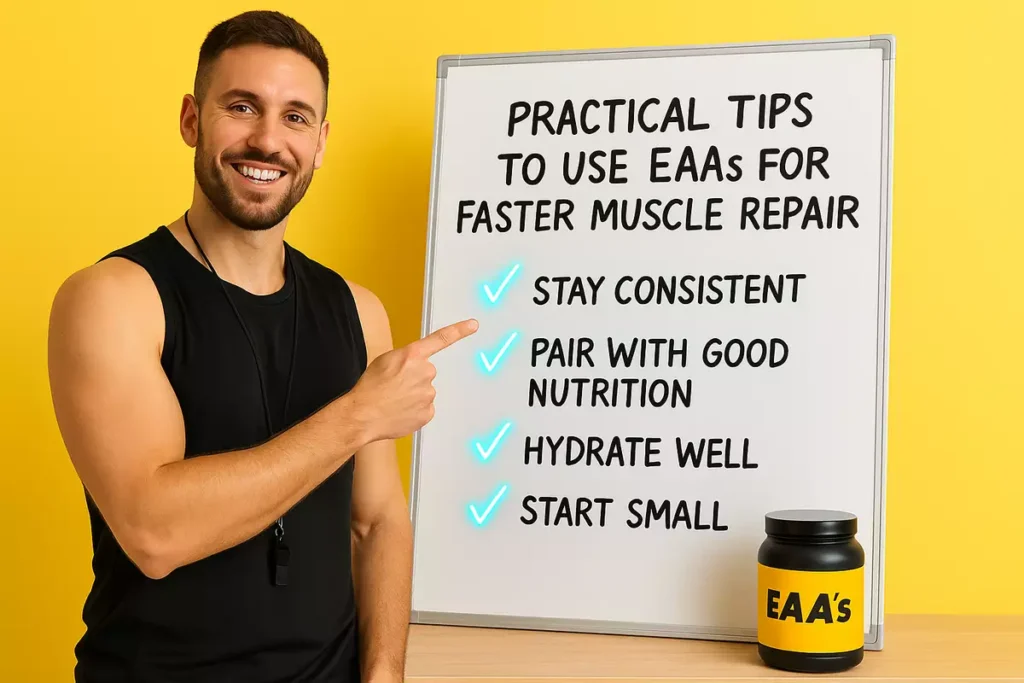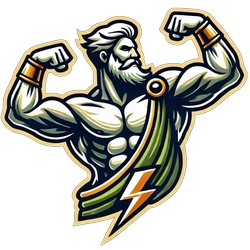Ever finished a brutal workout only to wake up barely able to move? That’s delayed onset muscle soreness (DOMS), and it can stall your progress fast.
As a fitness trainer who’s battled DOMS countless times, I’ve tested many recovery strategies. One question I hear often is: “Do EAAs really help with DOMS?”
The short answer—yes, they can make a big difference. Let’s break down how EAAs speed up recovery, reduce soreness, and help you get back to training stronger.
Table of contents
- Can EAAs Reduce DOMS?
- What Are EAAs and How They Work in Recovery
- Scientific Evidence: EAAs and Muscle Soreness Reduction
- Optimal Timing and Dosage for DOMS Relief
- EAAs vs. BCAAs for Recovery – Which Works Better?
- Practical Tips to Use EAAs for Faster Muscle Repair
- Real Athletes’ Experiences with EAAs and DOMS
- Final Thoughts – Are EAAs Worth It for Recovery?
Can EAAs Reduce DOMS?
If you’ve ever hit a heavy leg day and struggled to walk for three days straight, you know exactly what delayed onset muscle soreness (DOMS) feels like.
From my personal experience and working with many athletes, I can confidently say EAAs (Essential Amino Acids) can absolutely help reduce DOMS.
They won’t magically erase soreness overnight, but they significantly speed up muscle repair. This means less pain, faster recovery, and the ability to train hard again sooner.
What Are EAAs and How They Work in Recovery

EAAs are the nine amino acids your body can’t produce on its own. They’re crucial for muscle protein synthesis—the process your muscles go through to repair and grow after intense training.
When you work out hard, tiny muscle fibers tear. EAAs supply the full range of building blocks your body needs to fix those fibers quickly and efficiently.
This is why they’re highly effective in reducing post-workout soreness and supporting recovery, especially for athletes who train multiple times a week.
To learn more about how long EAAs stay active in your body, check out how long EAAs stay in your system.
Scientific Evidence: EAAs and Muscle Soreness Reduction
Studies show that supplementing with EAAs after resistance training can boost protein synthesis and reduce markers of muscle damage.
This translates to less lingering soreness and faster strength recovery compared to training without them.
From what I’ve seen in real life, these findings hold true. My own DOMS duration dropped almost in half when I consistently used EAAs after training.
If you want to dive deeper into their benefits for different fitness goals, you can explore EAAs for cutting and muscle preservation and even how they support older adults in maintaining strength.
Optimal Timing and Dosage for DOMS Relief

Timing is key. Through trial and error, I found that taking 10 grams of EAAs split into two servings—half before and half after training—works best.
When I only used EAAs before training, the results weren’t as noticeable. Adding a post-workout dose really sped up recovery and helped me bounce back for my next session.
On days when you’re not training, EAAs can still help maintain muscle health and aid recovery. Here’s a guide on how to take EAAs on rest days.
EAAs vs. BCAAs for Recovery – Which Works Better?
While BCAAs are popular, EAAs have the upper hand.
BCAAs only include three amino acids, whereas EAAs provide all nine essentials needed for complete muscle repair.
In my coaching experience, athletes using EAAs report less soreness and quicker recovery than those relying solely on BCAAs.
For endurance athletes, EAAs also outperform many other recovery supplements. You can read more about this in the guide on EAAs for endurance runners.
Practical Tips to Use EAAs for Faster Muscle Repair

- Stay consistent: EAAs work best when taken regularly, not just after “killer” workouts.
- Pair with good nutrition: They complement, not replace, high-quality protein meals.
- Hydrate well: Proper hydration enhances amino acid absorption and recovery.
- Start small: Begin with 5–10 grams and adjust based on your training intensity.
If you’re on a low-calorie diet, EAAs can also help preserve lean muscle mass while cutting. Check out the article on EAAs and muscle preservation during low-calorie diets.
Real Athletes’ Experiences with EAAs and DOMS
Let me share a few quick stories.
One of my clients, Daniel from Germany, struggled to stick to a 5-day lifting schedule because heavy squats left him limping for days.
After adding EAAs post-workout, his soreness dropped significantly. Within a week, he could train consistently without missing leg day.
Another client, Sofia from Spain, runs marathons. She often battled calf soreness after long runs.
EAAs helped her recover faster, allowing her to hit her next training run with fresh legs instead of feeling wrecked.
Personally, after grueling hypertrophy sessions, EAAs have been a game-changer for me.
I used to take four days to fully recover from a squat-heavy workout—now it’s closer to two.
Final Thoughts – Are EAAs Worth It for Recovery?
If DOMS is holding you back from training at your best, EAAs are absolutely worth trying.
They provide your muscles with all the essential tools to repair quickly, reduce soreness, and let you push harder in your next session.
From my own journey and what I’ve seen with countless clients, EAAs aren’t hype—they’re a proven tool for better recovery and long-term progress in the gym.
For those curious about how EAAs compare to other supplements, here’s an article on EAAs vs collagen for strength and recovery.



Leave a Reply